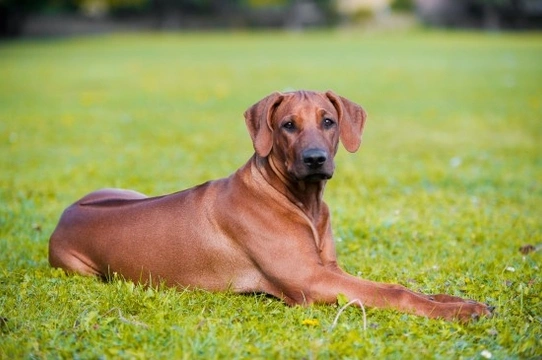Pets
Pets for studWanted petsBreedersAccessories & services
Knowledge hub
Support
Support & safety portal
The genetics of the Rhodesian ridgeback dog’s ridge
The Rhodesian ridgeback is a large breed of dog that was developed in South Africa, which originated when immigrants to the region crossed their European dogs with the native semi-domesticated dogs of the Khoikhoi, which included ridged hunting dogs. They are renowned for being bold, incredibly courageous and excellent fighters, and are still widely used within the region as guard dogs that are prized for their fearless natures.
The Rhodesian ridgeback is a very distinctive dog that is instantly recognisable thanks to its size, build and colour, and also possesses one unique feature to ensure instant identification; a clearly defined ridge of hair running along the back in the opposite direction to the rest of the coat. This ridge begins with two whorls of hair that are known as crowns, which begin immediately behind the shoulders and run to the level of the hips. The ridge tapers towards the end, and is around 2” across at the widest point.
Because the ridge itself is so unusual and distinctive, a reasonable amount of research has been undertaken into its existence and genetic background, which may be of interest to ridgeback owners and potential owners. In this article, we will look at the genetics of the ridge in more detail, as well as its background and presence or absence within certain breed lines. Read on to learn more.
What causes the ridge?
It is important to note that while the ridge is considered to be part of the breed standard for the ridgeback dog, and has been present within the breed since its foundations when it was inherited from the Khoikhoi dog, is actually occurred firstly in the Khoikhoi dog as a genetic anomaly.
The gene mutation that causes the ridge is classed as a dominant autosomal trait, and this means that only one parent dog needs to carry the gene marker for the ridge for their offspring to inherit it. The fact that the gene is dominant rather than recessive means that the ridge itself soon became widely established within the breed.
It is entirely possible for ridgeback dogs to be produced without the signature ridge, if neither parent possesses the gene for it. However this is rather rare, and is classed as a fault in terms of the breed standard.
Any ridgeback dog that possesses the ridge either has one parent or both parents that also possessed the ridge, and the breeding of two non-ridged dogs, or heterozygous dogs, fails to produce a ridge at all.
If a parent dog with a ridge and one without it are bred, the subsequent puppies will all be ridged, but also have a 50-50 chance of not inheriting two copies of the ridge gene, and so may potentially breed non-ridgeless dogs themselves if bred to a ridgeless dog.
However, it is not possible to tell simply by looking at any dog with a ridge whether they have just one or two copies of the gene marker, and so there is not a reliable way to ensure further litters possess the ridge, unless you have access to several generations of the breed line’s history to identify the occurrence rate of the ridge!
Is there a test available to identify the gene markers for the ridge?
Currently, there is no test available to be able to isolate the presence of the gene itself, and whether it is heterozygous or homozygous. However, research is currently being undertaken in the USA, with the aim of creating a reliable test for future use.
Does the ridge gene mutation cause any problems?
While it is generally considered undesirable to produce ridgeless dogs, there are some potential problems with promoting a gene mutation such as that for the ridge widely across the entire breed’s gene pool.
It is important to remember that not all of the Khoikhoi dogs, from whom the ridgeback inherited the ridge trait, had ridges themselves, and as the Khoikhoi dog has not undergone any significant human intervention into their breeding processes, a level of ridgeless dogs within the Khoikhoi breed is perfectly normal.
This may have had some impact upon maintaining the diversity of the breed’s gene pool, and ensuring that the dominant gene for the ridge did not become fully hereditary. Generally, nature itself manages the health and viability of any given population without any human intervention, and selective breeding to try to promote any trait, including the ridge, comes accompanied by certain risks that can occur from our external manipulation. Attempting to enhance or standardise what is after all a mutation, albeit a dominant one, may come with risks and other problems that are carried along with the gene.
There is already a well-known, albeit not fully understood, relationship between the presence of the ridge and a condition known as dermoid sinus, which is almost unique to the only two standardised ridgeless breeds; the Rhodesian ridgeback and the Thai ridgeback. Although the connections and causations between the ridge, the gene and the problem are not known, it is thought that the gene that carries the ridge also carries triggering factors or mutations for dermoid sinus in some ridged dogs.



